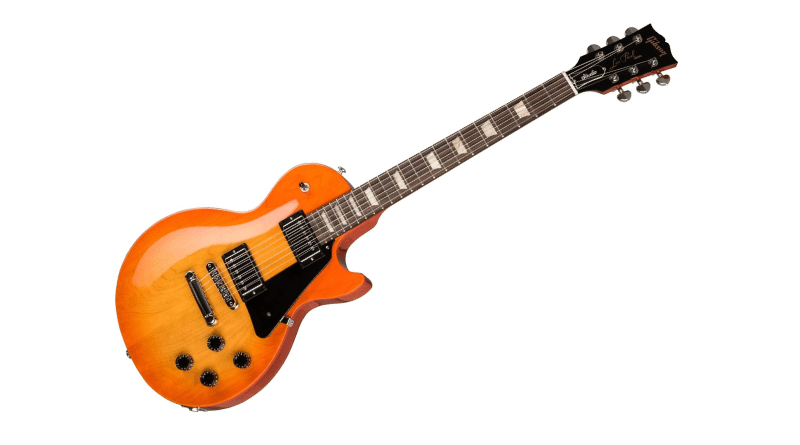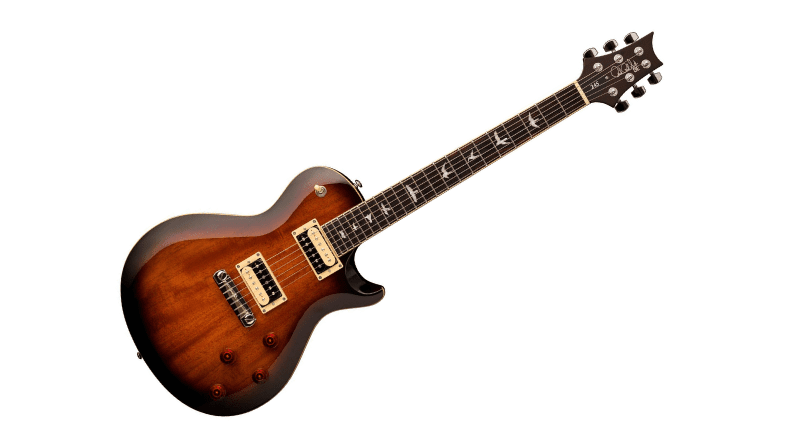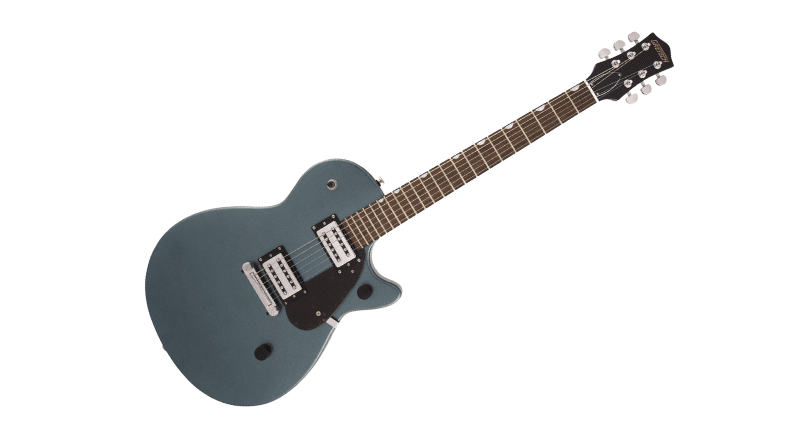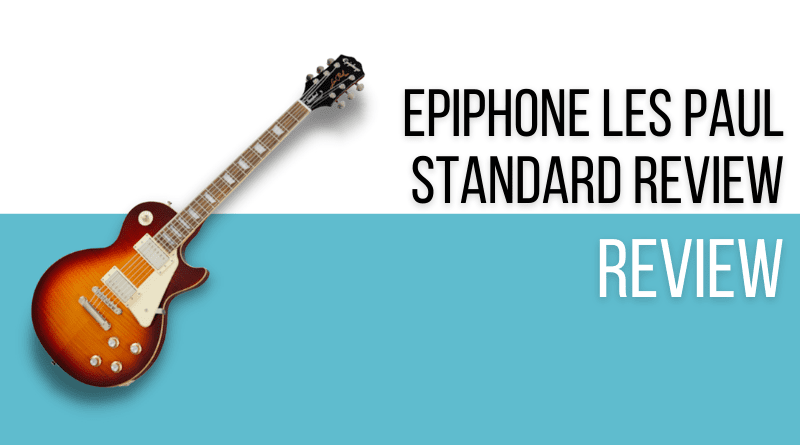In this latest KillerGuitarRigs Review, we got our hands on the Epiphone Les Paul Standard ’60s, a guitar that promises to provide everything a guitarist could need in an instrument, at a true working musician’s price. It’s commonly accepted that no Epiphone can really match the feel of a high-end or custom shop Gibson, but we really wanted to find out whether this Epiphone is a genuine alternative to a lower-end Gibson for both bedroom and gigging guitarists alike. Read on to find out what we learned!
Read more about our review process.
Contents
Who Is This For?
The Epiphone Les Paul Standard ’60s makes a great guitar for any level of musician, from beginners to recording and touring guitarists. In fact, several famous artists are well known for their use of the Epiphone Les Paul, including Matt Heafy of Trivium, and Frank Lero of My Chemical Romance.
The Epiphone Les Paul Standard has such a widespread appeal because, on paper, it’s built just like a Gibson. Yet it costs just a quarter of the price of the US-made instrument.
Appearance / Features / Controls
The current Les Paul Standard model from Epiphone is available with either a ’50s or ’60s spec. Both are great choices, but for this review we tested out the ’60s version. We were bowled over by the beautiful finish on this guitar. Our test model had the Bourbon Burst finish, which even featured a nicely bookmatched, flamed maple top.
This particular model is part of the new “Inspired by Gibson” line. This means it comes with the new Kalamazoo headstock, which is, aesthetically speaking, a big improvement over the previous design.
As all true Les Pauls should be, this Epiphone was made with a mahogany body and a set mahogany neck. Being a ’60s model, the neck had a nice, easy-playing, Slim Taper C profile, which we found to be comfortable and extremely forgiving, even for players with smaller hands.
The Indian Laurel fretboard has quite open pores, which we found on occasion got caught up on fingernails, which is an obvious downside. After a fingernail trim, it wasn’t such an issue, but it’s something worth noting for players with longer nails.
Overall, it’s a beautifully appointed guitar. It was equipped with genuine Grover Rotomatic tuners with an 18:1 ratio, which provided excellent tuning stability right out of the box. Also assisting this guitar with its excellent tuning stability was the standard graph tech nut. Even quality nuts like this aren’t particularly expensive, but they still aren’t common on guitars even at this price point, so it’s always nice to see.
It featured a pair of Epiphone Probucker alnico humbucking pickups, which we really enjoyed (more about those in the performance/sound section). It even came with CTS potentiometers, which if you aren’t familiar, are full-size, high-end electronics that many choose to upgrade other guitars with. We found this Les Paul was ready to go right out of the box.
Performance/Sound
The first thing we noted during this section of the test was just how authentic the feel was. It certainly has the weight of its older brother, the Gibson Les Paul Standard ’60s. By our scale, this Epiphone weighed in at around 9 and a half pounds. As far as playability was concerned, everything about it felt right. The one thing that would give this away in a blind test is the neck finish. The profile is fantastic. It’s very comfortable and it’s fast, but the polyurethane finish doesn’t have the same tactile feel as the nitro finish on a Gibson.
The action out of the box was great. It was low enough to keep it comfortable and fast, but not so much that we experienced any fret buzz from the 22 medium jumbo frets. The fretboard has a 12” radius, which we found to be a great setup for this guitar. It had sufficient curvature to keep chords comfortable, but was flat enough to accommodate some big bends without choking out.
Working our way through the pickups, we started at the neck. The neck pickup (Probucker 2) is super hot, meaning we did have to roll back the volume below 50% to clean up the tones properly. Once it was dialed in, though, we got warm, glassy cleans, which were perfect for blues, jazz, and funk tones.
We didn’t really find the middle position offered too much tonal excitement. As you’d expect, it had a decent balance of highs and lows, but seemed to lack mids without quite a bit of EQ adjustment.
The bridge pickup (Probucker 3) was the real star here. It cleaned up beautifully with the volume and tone rolled back. But even when it was cranked and the tone was maxed, it kept tremendous clarity while delivering the snarl that Les Pauls are so famous for.
Other Guitars to Consider
If it doesn’t seem that the Epiphone Les Paul Standard ’60s will fit your needs, there are tons of great alternatives.
Gibson Les Paul Studio

While it’s not quite a Standard, the Gibson Les Paul Studio does represent an upgrade over the Epiphone (and certainly over the Epiphone Les Paul Studio). It has all the classic Gibson appointments, including a mahogany body, carved maple top and dual humbucking pickups. It costs a little over double the price, but it will depreciate far less than the Epiphone. Plus, it has the prestige that comes along with the Gibson headstock (if that’s important to you) and the quality of fit and finish that comes with every Made-in-the-USA Gibson model.
PRS SE Standard 245

If you’re not specifically looking for a Les Paul, but you do want a single cut with 2 humbuckers, the PRS Standard 245 is a stellar choice. For around the same price as the Epiphone Standard, you’re getting a Paul Reed Smith with punchy zebra humbuckers, solid mahogany construction on the neck and body, and much more ergonomic contours. That makes this one of the most comfortable Les Paul style guitars on the market. Of course, it has the iconic PRS birds-in-flight fretboard inlay as well. It’s definitely a simple guitar, but it has the style and tones to rival the Epiphone Les Paul Standard.
Gretsch G2210 Streamliner Junior Jet Club

The Gretsch G2210 Streamliner Junior Jet Club is a single cut with a bit more of a retro aesthetic. As with the other suggestions, it’s equipped with a pair of humbuckers. Although these pickups are much less hot than those on the Epiphone, Gibson, and PRS. These Gretsch G2210s are great for cleaner styles like Jazz and Blues.
Final Thoughts on the Epiphone Les Paul Standard
The Epiphone Les Paul Standard ’60s is a tremendous guitar that for most players, will be all the instrument they’ll ever need.
Yes, a Gibson Les Paul is a nice upgrade over the Epiphone, but the benefits of the upgrade will never be realized by the vast majority of players. It feels great, it looks the part, and it’ll last a lifetime if properly looked after.
The Epiphone Les Paul Standard really is the next best thing to a Gibson. It’s the very definition of a work horse, and we’re sure you’ll feel the same.
Check out these other articles you might like:


